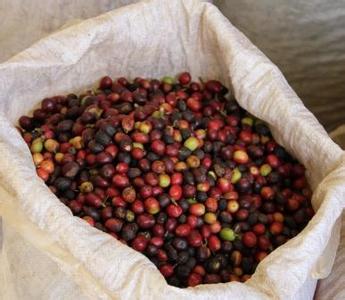What does the blue mark, green mark, red mark of Rosa Coffee mean?
What does the blue mark, green mark, red mark of Rosa Coffee mean?
In 1931, it was exported to Kenya in obscurity from Geisha Mountain Mountain in southwestern Ethiopia, wandered to Tanzania and Costa Rica, was transplanted to Panama in the 1960s, and then went through nearly half a century before it became a blockbuster, beating the victorious armies of Bourbon, Kaddura, Kaduai and Tibika to win the first prize of the Panamanian National Treasure Bean Cup Test Competition in 2005, 2006 and 2007. In 2007, the international famous bean cup test sponsored by the American Fine Coffee Association (SCAA) won the championship again, and the bidding price was sold at US $130 per pound.
The seeds of "Rose Summer" coffee were taken from Geisha Mountain (Mount Rosa) in southwestern Ethiopia in 1931, transplanted to Kenya in 1931, subplanted in Tanzania in 1936 and introduced to Costa Rica in 1953. It is unknown when they were introduced to Jaramillo Manor in Panama, except that the Price Peterson family of Hacienda La Esmeralda in Panama bought the Galamie Manor in 1996. Found that the edge of the manor has a unique flavor of coffee, so participated in the 2004 Panama "extraordinary Cup" (COE) competition, did not want to become famous, and has won awards almost every year since. Later, it was identified that the variety originated from the "Mount Roxia" in Ethiopia.
Varieties of coffee such as Rosa are popular all over the world because the taste of coffee is easy to identify even for beginners. With a sip, you can clearly distinguish the peach, mango, floral and citrus flavors of coffee. By contrast, the taste of cattula coffee from Colombia or Costa Rica is difficult for most people to describe, but what I want to say is that the difficulty of description is not the same as the true quality of coffee.

Important Notice :
前街咖啡 FrontStreet Coffee has moved to new addredd:
FrontStreet Coffee Address: 315,Donghua East Road,GuangZhou
Tel:020 38364473
- Prev

Brief introduction of grinding scale production area for description of altitude flavor of Colombian coffee beans
Brief introduction of Columbia Coffee Bean Flavor description characteristics Grinding scale production area the main varieties of Colombian coffee are Arabica coffee (coffea arabica), that is, small fruit coffee (small grain coffee), while large fruit coffee (coffea robusta) is mostly grown in Africa of origin, such as the famous Malagasy coffee. There are several varieties of small fruit coffee, world output
- Next

Guatemala Inchter Estate Coffee Bean Variety Flavor Taste Region Grinder Profile
Guatemala Inchter Estate Coffee Bean Variety Flavor Taste Profile GrindingRich volcanic soil, low humidity, plenty of sunshine and cool nights are the characteristics of this growing area. The valley is surrounded by three volcanoes: Agua, Fuego and Acatenango. Ash from the eruption enriched the soil in Antigua
Related
- Detailed explanation of Jadeite planting Land in Panamanian Jadeite Manor introduction to the grading system of Jadeite competitive bidding, Red bid, Green bid and Rose Summer
- Story of Coffee planting in Brenka region of Costa Rica Stonehenge Manor anaerobic heavy honey treatment of flavor mouth
- What's on the barrel of Blue Mountain Coffee beans?
- Can American coffee also pull flowers? How to use hot American style to pull out a good-looking pattern?
- Can you make a cold extract with coffee beans? What is the right proportion for cold-extracted coffee formula?
- Indonesian PWN Gold Mandrine Coffee Origin Features Flavor How to Chong? Mandolin coffee is American.
- A brief introduction to the flavor characteristics of Brazilian yellow bourbon coffee beans
- What is the effect of different water quality on the flavor of cold-extracted coffee? What kind of water is best for brewing coffee?
- Why do you think of Rose Summer whenever you mention Panamanian coffee?
- Introduction to the characteristics of authentic blue mountain coffee bean producing areas? What is the CIB Coffee Authority in Jamaica?

